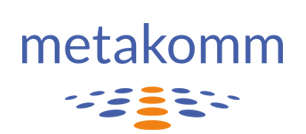8 Ideas for teams to further develop the agile mindset

An agile mindset is formed by making thinking more flexible and by extending and changing the „usual trails“ in the brain.
To stimulate the agile mindset there are a number of exciting exercises and challenges for teams, some of which I will present here.
In this article you will find ideas on how to reflect the „agile thinking“ in your team and eight challenges that teams can set themselves in order to build and expand their agile mindset together.
What is an agile mindset?
A mindset consists of the inner stance, basic attitude, beliefs and personal values of a person. It determines how and what information we absorb, how we evaluate information, what feelings are triggered in us and what actions we derive from situations.
An agile mindset is a logic of thinking and acting that is the prerequisite for agility.
In contrast to a rigid mindset, according to Carol Dweck a „fixed mindset“, which represents the attitude ‚mindset is a constant, it is as it is‘, an agile mindset stands for a „growth mindset“, in which one assumes that the mindset is constantly evolving. Everything is in constant change and so one’s own attitude and way of thinking must be constantly critically reviewed and reflected upon.
Agile work requires a high degree of personal responsibility, the capacity for criticism and the readiness for self-reflection.
In agile teams, everyone is challenged to constantly put the results to the test and, if necessary, make course changes. This requires a high degree of self-organisation and motivation.
You cannot train an agile mindset, but you can consciously take on tasks and challenges with which an agile mindset can develop. This development has no end, there is no „download completed“, but it is a continuous process for individuals and teams.
How agile are the attitude and way of thinking in teams?
Does a team automatically become agile when it stands around a task board for the daily standup in the morning, when position titles get new „fancy“ names, when everyone is on first-name terms up to the board of directors or when an online collaboration tool is introduced?
That alone is not enough. If the team members still approach their tasks with a traditional logic of thinking and acting, even with new tools there is little movement towards agility.
How we think, feel and act is determined by our socialization and our experiences. Our mindset, expectations and judgements solidify from childhood on and are quite stable as adults.
A stable mindset enables us to behave intuitively in situations and to behave mostly automatically in standard situations.
On the one hand, this is a relief: we do not have to rethink our attitude and approach from scratch in every situation. On the other hand, it often lets us do, think and feel the same things without reflection.
With routines and standards, however, we are increasingly coming up against limits in an ever faster changing world.
Why does the agile mindset need to be further developed?
- Some skills and competences that were very important in the age of industrialisation are still a guideline for many people today: hard work to guidelines, technical skills and abilities, optimisation of processes. This requires analytical process thinking, compliance and conformity. Work has to become more and more efficient. To be successful, people orient themselves to best practice and guidelines.
- Our living and working conditions are changing in rapid steps due to digitalisation. If we do not adapt and learn along with them, we run the risk of not being able to find our way in the modern world and of being left behind.
- Most people have often heard the following or similar statements in their socialization:
- Life is not a wish list.
- Only the best wins the prize.
- It is either good or bad.
- Successful projects are well thought out from beginning to end.
- Always remain factual.
- Talking about feelings is women’s stuff.
- There is always a culprit.
The attitude leading to such statements is typical of a fixed immovable mindset (see above fixed mindset).
- The competencies that need to be learned to move in the digital world are different. While learning and education has so far served primarily to adapt to performance standards, in the age of digitalisation it is increasingly a question of developing skills such as to question things, to be able to access and research knowledge in a meaningful way, to critically question supposed facts, to link and further develop experiences, knowledge and skills.
- Creativity, intuition and empathy are the important competencies for a working world in which sense, innovation and participation of all people are important. In conventional school systems and general socialisation, these competences have been little promoted so far. (There are of course always exceptions).
Check: How agile is the mindset in our team?
The logic of thinking and acting in a team can be observed in the action and behaviour of the team members.
In Svenja Hofert’s work I found the following observational questions about the agile mindset in teams, an extract of which I would like to present here:
- How well can a team deal with a situation that is not clear? Does it come to a standstill? Is advice sought from authorities? Does the team communicate with each other?
- How large and clear is the room for manoeuvre for own decisions in the team?
- Does the team see learning and development as a core topic that continuously impacts everyone? Is learning limited to technical content only or is it also related to the collaboration among each other?
- Is everyone able to take the lead in critical situations?
- Is the team able to set goals for itself, check them and modify them if necessary?
- Can the team adhere to organizational and team-related rules, modify them and break them if justified?
- Is the team in active and fruitful exchange with other stakeholders in the company in order to develop itself and others?
The observations can be evaluated as follows: The less these questions can be answered with yes for a team, the further away it is from an agile mindset.
What areas of development are there for an agile mindset?
Within the team, everyone should make it a continuous development goal to improve their agile mindset.
The following areas of development are suitable for this:
– Becoming more flexible and freer in thinking
– Boosting the joy of playing and experimenting
– Daring to venture more boldly into the unknown
– Fostering creativity
– Strengthening empathy
– Self-reflecting in comparison with feedback in the team
8 exercises for teams
Hereafter I suggest eight different team exercises that stimulate different aspects of the agile mindset. I have taken the exercises from Svenja Hofert’s „Mindshift“, which I gladly recommend for a deeper understanding of the topic.
The execution of the exercises is easy. The team gets together and discusses the assignment. Some exercises can be carried out directly, for others a time frame for execution must first be defined. After the completion of the exercise, all team members exchange their experiences, what they experienced, what they found easy and what was not so easy to do.
In the spirit of the open and continuous development process mentioned above, it is important that the team does not get back into a conventional way of thinking and looking at things by evaluating the process (who did it right), collecting best results (what we now define as best practice) and trying to derive new rules (what is now the best process). The exercises are primarily about experiencing and discussing these.
Exercise 1 – Useless rules:
Each person writes down which rules apply in the organisation or team that make no sense to him/her. Discuss them with the team and give reasons for your decision. What do you see and what do the others see? Think about which rules you can delete in the future and which new ones you might want to add.
Exercise 2 – ‘Flexiquence’:
Flexibility helps to stay mobile, consequence helps to finish things in a structured way. Both aspects have advantages and disadvantages. On a scale of zero to ten, where do you stand with both? How can you achieve more of what is less pronounced in you? Ask team members for tips and give each other feedback.
Exercise 3 – Healthy arguing:
Discuss as a team: What is the nature of joint arguing, both within the team and outside? If you replace the word „arguing“ with „struggling for the best solution“, how would your view change? Would your behaviour in the situation change?
Exercise 4 – Nudging:
Nudging means designing the frame and the environment in such a way that a certain behaviour is encouraged. For example, a visible timer in the meeting room increases time awareness. Discuss in a team: What do you want to positively influence in which direction? How could you nudge? Find at least 10 ideas in the team and consider which of them you want to implement.
Exercise 5 – Everything flows:
Each person writes down ten aspects that have changed in their environment/organisation in the last 21 days. Then compare them. Which perceptions are similar? Which are different? How do you explain differences?
Exercise 6 – Change of direction:
Exchange views in the team on your own daily routine behaviour. Do you walk the same way to work every morning? Do you always buy the same food? Do you always spend your lunch breaks with the same colleagues? Agree on a phase in which everyone consciously does something different and then exchange your experiences.
Exercise 7 – 3x thank you:
Does the „not-scold-is-enough-is-praised-principle“ prevail in your team? If so, you decide to thank your colleagues together over a certain period of time, preferably 3 times a day. Exchange your thoughts on this. How did it feel to thank or to receive thanks? What is difficult to do? What is easy? What is good? What is too much?
Exercise 8 – Loosen screws:
Think of a topic that is relevant to you and which you think you have understood and penetrated well. Ask three different people what their understanding of the topic is. Discuss whether the answers you receive help to change your own view and loosen up fixed assumptions.
Bottom line
In today’s working world, an agile mindset is increasingly in demand. Teams can support each other in developing their agile attitude and way of thinking by making their agile mindset a continuous development topic in the team.
Joint team assignments and small challenges provide an opportunity for exchange and joint development. And besides the development of the agile mindset, they are also fun and help the team members to get to know new sides of each other again and again.



